Artifacts of alteration
Most visitors return from Jordan Lake with a tan and a photograph. Recent Carolina graduate Ayla Gizlice collects something else entirely — chunks of clay, plastic bags, rocks — for an art project addressing how human actions shape the physical environment.
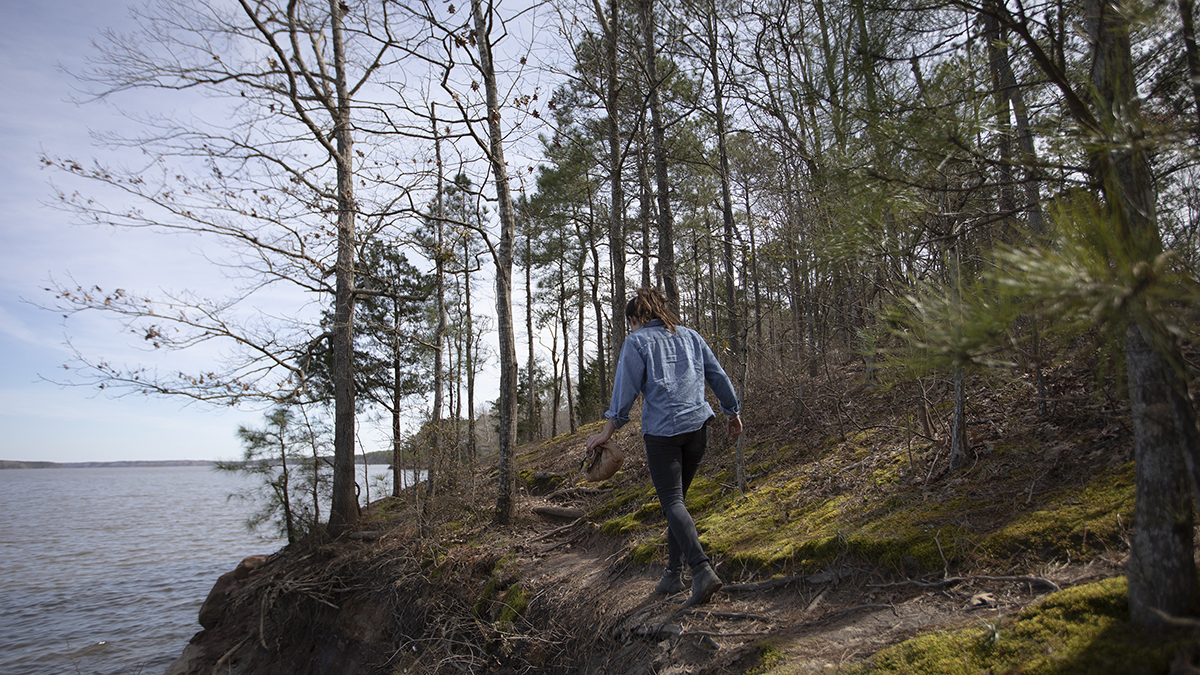
Walking along the elevated shoreline of Jordan Lake, something catches Ayla Gizlice’s eye. She slides down the eroded bank, crouching with her weight on her heels, and navigates over a massive tangle of tree roots. Delicately picking up a large piece of clay, she inspects its texture and color. After putting a few hunks of the sediment into a bag, she stands and scans the shoreline ahead. The search continues.
Last year, Gizlice studied the history and environmental issues of Jordan Lake during a capstone course. Since then, she has returned to the reservoir countless times to find objects to incorporate into her senior thesis art project.
“I feel like, with environmental issues, there’s a tendency to either deny or disassociate,” said Gizlice, a recent Carolina graduate who double-majored in environmental science and studio art within the College of Arts & Sciences. “I want people to look at the problems head on and consider how they might play a role in the environment and how the environment might affect them.”
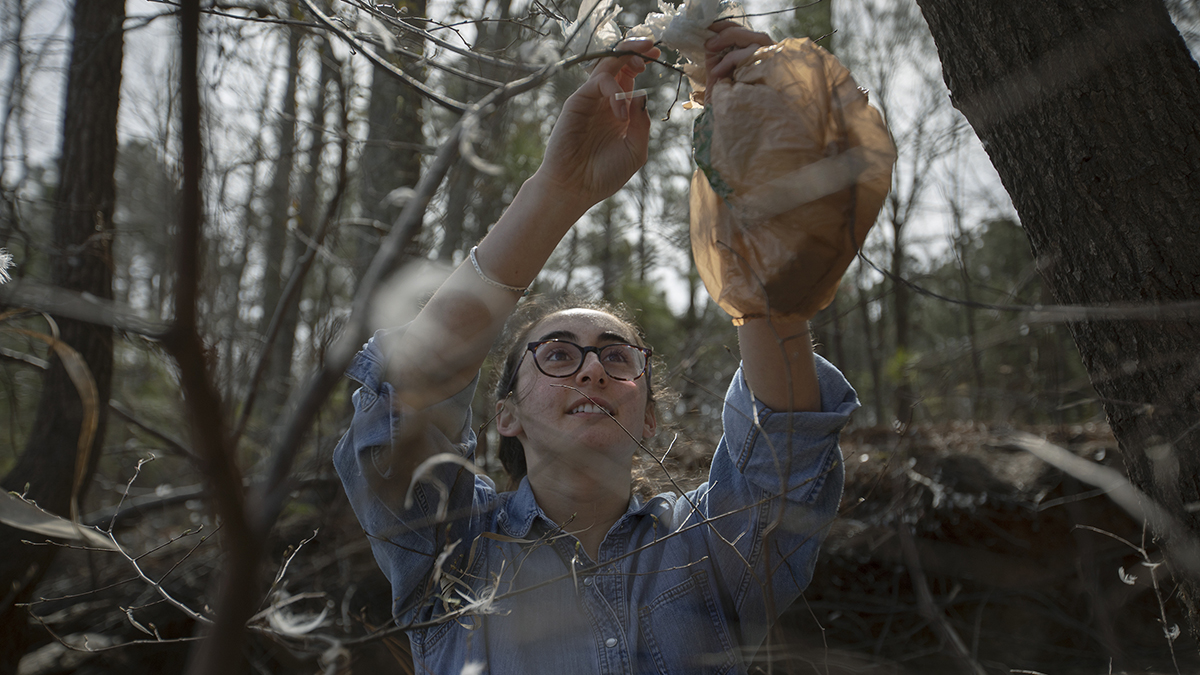
Gizlice untangles a plastic bag from a tree branch along the shore of Jordan Lake. With a plant pathologist as a mom, a dad with a Ph.D. in plant genetics and multiple extended family members who are artists, Gizlice’s choice to double-major in both environmental science and studio art was almost a given.
“I came into the environmental science major most excited about advocacy,” she said. “I think that’s something I can definitely pursue through the lens of art.”
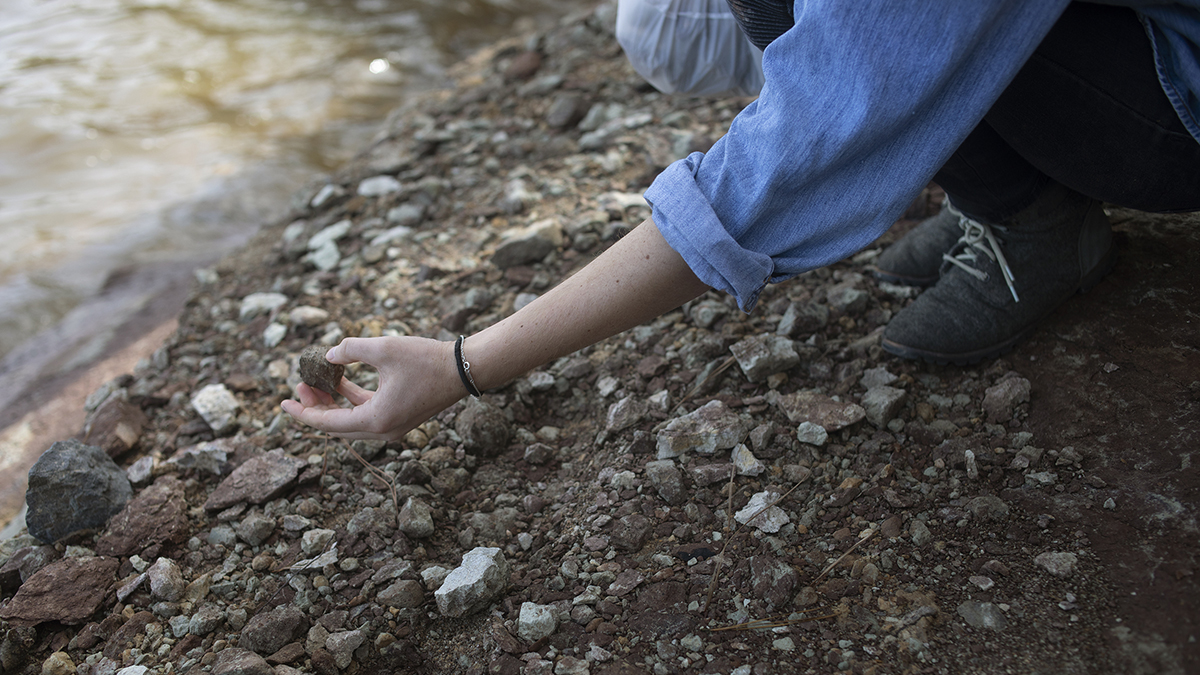
Over the past six months, Gizlice has spent hours at the lake and surrounding streams collecting materials like clay, fish bones and carcasses, plastic bags and large rocks.
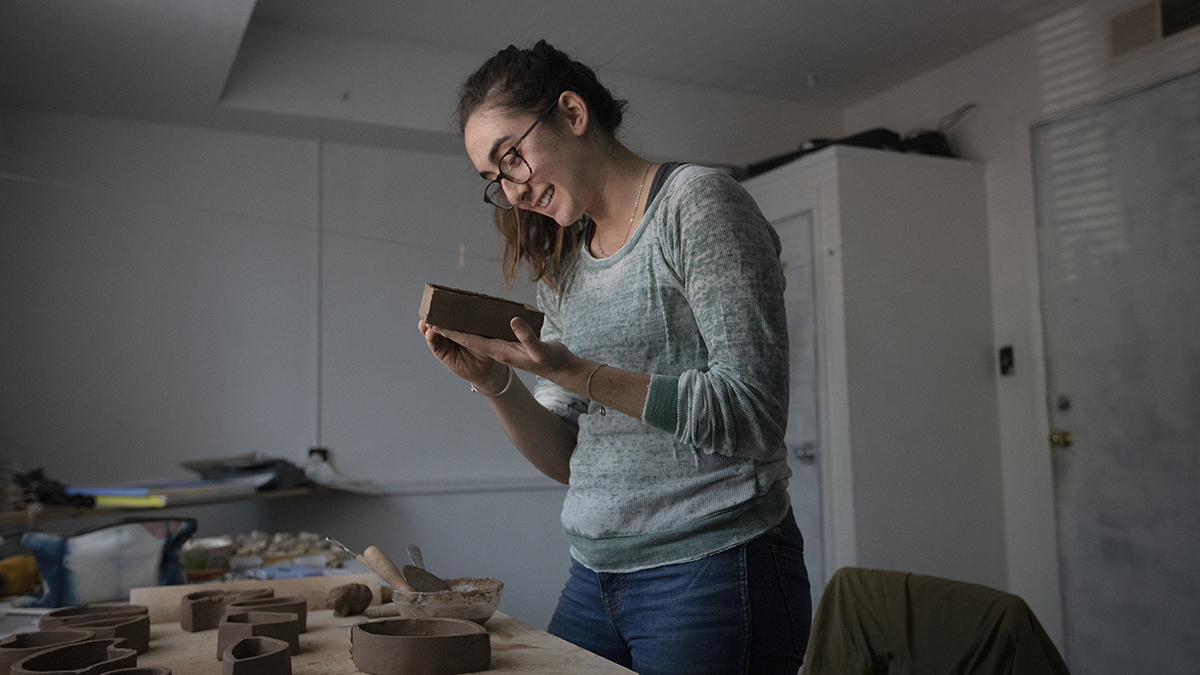
Gizlice hopes that including actual bones and carcasses will send a stronger message than abstract depictions of dead fish. “I think there is a degree of separation that happens when you have a representation of an object or an issue,” she said. “By having the actual bodies that resulted from these environmental issues there’s a more immediate reaction.”
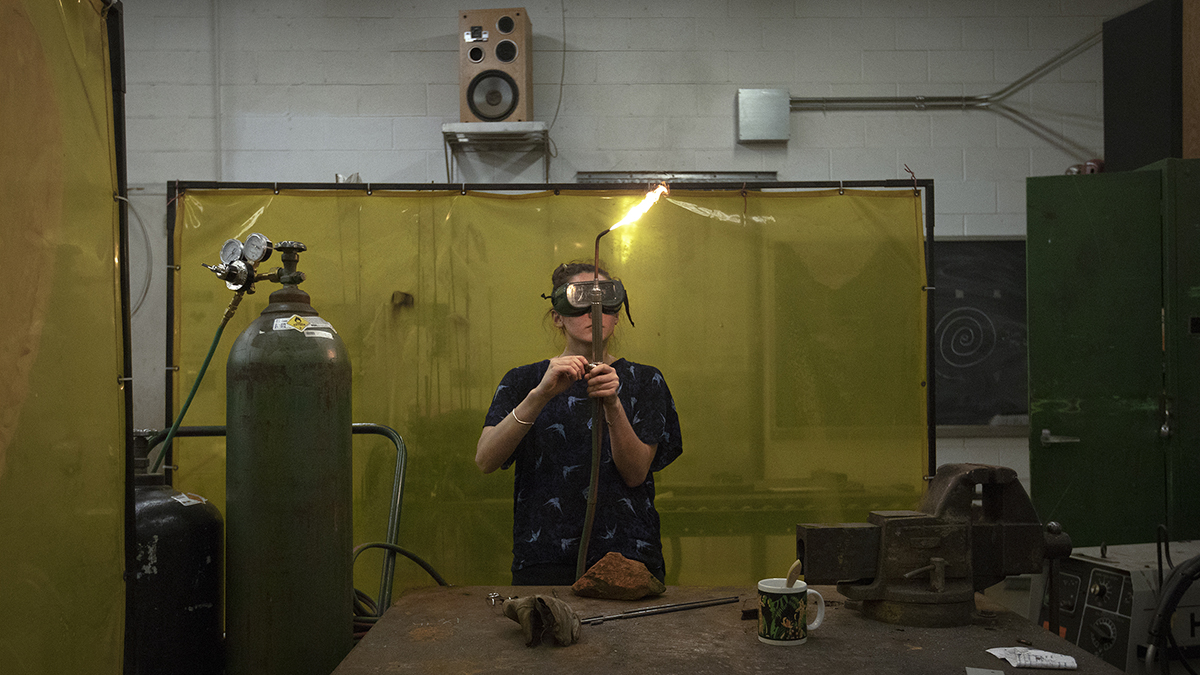
Gizlice prepares to weld a flag stand for the plastic she found at the lake and surrounding streams. She calls her approach a “performative ecological proposition.”
“It’s really wordy,” she said while laughing. “But it means forcing me to work a lot harder for the materials. Rather than creating something from materials that don’t really hold meaning on their own, these objects had meaning and existed perfectly outside of my project.”
For the project, Gizlice specifically honed in on white plastic bags. Gathering them not only served as a functional component, she said, but the act of collecting the litter was also a way for her to undo negative human impact on the local environment. “It’s a white flag which seems a little bit like a surrender,” she said. “It’s the environment surrendering to human intervention.”

Gizlice named her piece “Natura Naturans” — a Latin term that roughly translates as “to nature,” implying that the environment is always in flux. “I wanted to focus on the prospect of change,” she said. “I think that’s much more hopeful.”




